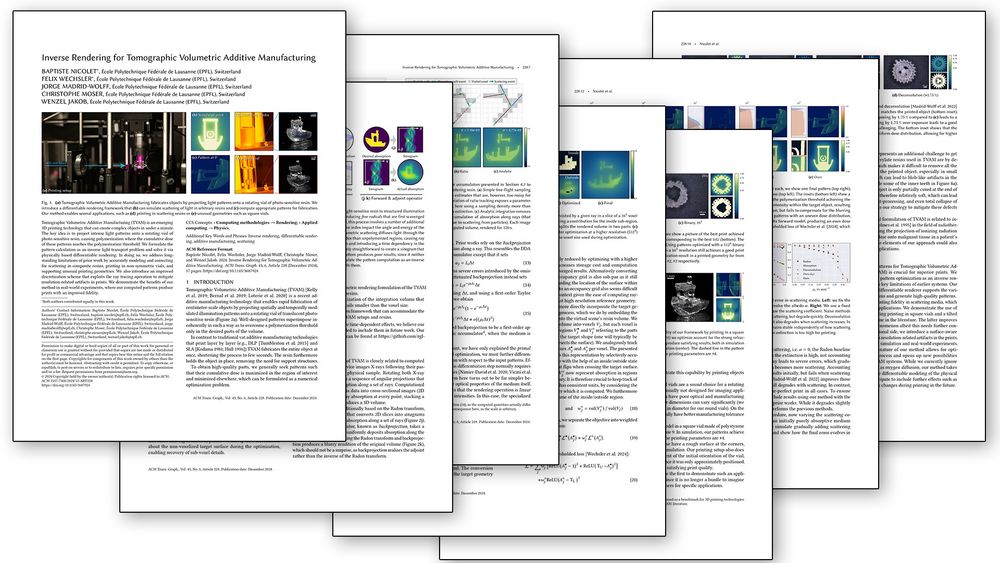Working on computational 3D printing
Coding mostly with @julialang.org
Gravel and road cyclist, Ultimate Frisbee lover


Link to Dr.TVAM: github.com/rgl-epfl/drt...
Link to configuration files: github.com/EPFL-LAPD/Ov...
Link to Dr.TVAM: github.com/rgl-epfl/drt...
Link to configuration files: github.com/EPFL-LAPD/Ov...
- Printing micro-fluidic channels around existing inlets in a square vial.
- Fabricating a custom lens directly onto an LED, turning it into a micro-projector
- Detecting spheres at arbitrary locations and printing over them within minutes.
- Printing micro-fluidic channels around existing inlets in a square vial.
- Fabricating a custom lens directly onto an LED, turning it into a micro-projector
- Detecting spheres at arbitrary locations and printing over them within minutes.
And, Thorlabs also doesn't send you emails to keep you updated.
No reply from customer support either so far.
And, Thorlabs also doesn't send you emails to keep you updated.
No reply from customer support either so far.
But do not hesitate to reach out to me if you are looking for something specifically to print!
But do not hesitate to reach out to me if you are looking for something specifically to print!
As long as the material is relatively transparent, many things can be done. Ceramics for example need certain postprocessing steps.
As long as the material is relatively transparent, many things can be done. Ceramics for example need certain postprocessing steps.
We release an open-source software, Dr.TVAM, which can be easily installed via pip. Please see the [documentation](drtvam.readthedocs.io) and our [paper](rgl.epfl.ch/publications...) for more details.

We release an open-source software, Dr.TVAM, which can be easily installed via pip. Please see the [documentation](drtvam.readthedocs.io) and our [paper](rgl.epfl.ch/publications...) for more details.




